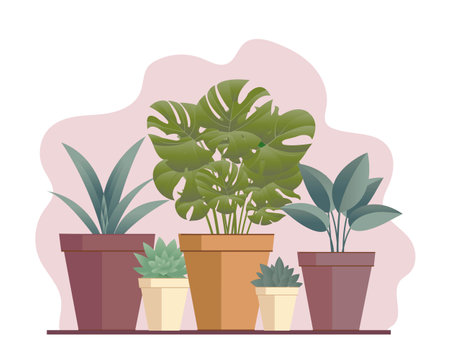Understanding Your USDA Hardiness Zone
Before you pick out bulbs and tubers for your garden, its important to know your USDA Hardiness Zone. This system helps gardeners across the United States understand which plants are most likely to thrive in their specific region based on average annual minimum winter temperatures.
What Is a USDA Hardiness Zone?
The USDA Hardiness Zone Map divides North America into 13 zones. Each zone represents a 10°F difference in the average annual minimum temperature. Knowing your zone helps you choose bulbs and tubers that can survive and grow well in your local climate.
Why It Matters When Choosing Bulbs and Tubers
Bulbs like tulips, daffodils, and lilies, or tubers like dahlias and potatoes, all have different temperature and growing requirements. Some need cold winters to bloom properly, while others cant survive frost. Picking varieties that match your zone ensures healthy growth and beautiful blooms.
How to Find Your USDA Zone
You can easily find your USDA Hardiness Zone by visiting the official USDA website or checking online gardening resources. All you need is your ZIP code. Heres a quick reference guide:
| Zone | Temperature Range (°F) | Example Locations |
|---|---|---|
| 3 | -40 to -30 | Northern Minnesota, parts of Montana |
| 5 | -20 to -10 | Chicago, IL; Denver, CO |
| 7 | 0 to 10 | Nashville, TN; Oklahoma City, OK |
| 9 | 20 to 30 | Phoenix, AZ; Houston, TX |
| 11+ | 40 and above | Southern Florida; parts of Hawaii |
Helpful Tip:
If youre on the border between two zones or live in an area with microclimates, choose bulbs and tubers that are hardy in the colder of the two zones for better success.
Understanding your USDA Hardiness Zone is the first step to choosing bulbs and tubers that will thrive in your garden. Once you know your zone, you can start exploring plants suited for your area’s unique climate conditions.
2. Evaluating Soil Type and Drainage
Discover how to determine your soil composition and drainage level to ensure your bulbs and tubers have the best growing conditions. Choosing the right bulbs and tubers starts with understanding the type of soil in your yard or garden. Soil affects how well water drains, how nutrients are absorbed, and how roots grow—all of which are essential for healthy bulb and tuber development.
Understanding Your Soil Type
The first step is figuring out what kind of soil you have. Most soils fall into one of these basic categories: sandy, loamy, clay, or silty. Each has different properties that can impact plant growth.
Common Soil Types and Their Characteristics
| Soil Type | Texture | Drainage | Best Bulbs/Tubers |
|---|---|---|---|
| Sandy | Gritty, loose | Drains quickly | Tulips, Crocus, Dahlias (with added compost) |
| Loamy | Balanced, crumbly | Ideal drainage | Most bulbs and tubers thrive here |
| Clay | Sticky when wet, hard when dry | Poor drainage | Daffodils, Camassia (with improved aeration) |
| Silty | Smooth, slippery when wet | Holds moisture well | Begonias, Caladiums (watch for overwatering) |
How to Test Your Soil at Home
You can get a general idea of your soil type with a simple jar test:
- Fill a clear jar halfway with soil from your garden.
- Add water until the jar is almost full.
- Screw on the lid and shake vigorously.
- Let it sit for several hours so the particles settle.
The soil will separate into layers: sand at the bottom, silt in the middle, and clay on top. This gives you a rough estimate of your soil composition.
Checking Drainage Quality
Drainage is just as important as soil type. To check how well your soil drains:
- Dig a hole about 12 inches deep and fill it with water.
- Let it drain completely.
- Refill the hole with water and time how long it takes to drain again.
If it takes more than four hours to drain, your soil may have poor drainage. In that case, consider raised beds or amending your soil with organic matter like compost or peat moss.
Tips for Improving Soil Drainage
- Add compost or aged manure to loosen heavy clay soils.
- Avoid compacting soil by walking directly on garden beds.
- Create raised beds if natural drainage is too slow.
- Mix in sand only if youre working with extremely clay-heavy soils—otherwise, it can make things worse.
Quick Tip:
If youre unsure about your soils pH or nutrient levels, many local county extension offices offer affordable soil testing services tailored to your region’s climate and common crops.
Selecting bulbs and tubers that match your soil conditions gives them a strong start, leading to healthier plants and better blooms or harvests later in the season.

3. Selecting Bulbs and Tubers Suited to Your Climate
When choosing bulbs and tubers for your garden, its essential to consider your local climate. Different plants thrive in different temperature zones, so picking varieties that match your region will give you the best results. The U.S. Department of Agriculture (USDA) Plant Hardiness Zone Map is a great tool to help determine which zone youre in.
Understanding Your Climate Zone
The U.S. has a wide range of climates—from the cold winters of the North to the warm, humid South and the dry heat of the Southwest. Knowing your hardiness zone helps narrow down bulb and tuber choices that will thrive in your area without needing extra care or protection.
Common USDA Hardiness Zones by Region
| Region | Typical USDA Zones | Climate Characteristics |
|---|---|---|
| Northeast & Upper Midwest | 3–6 | Cold winters, moderate summers |
| Southeast | 7–9 | Mild winters, hot and humid summers |
| Southwest | 8–10 | Hot, dry climate with mild winters |
| Pacific Northwest | 7–9 | Mild, wet winters and cool summers |
| Mountain West & High Plains | 4–7 | Cold winters, dry air, short growing season |
| Southern California & Gulf Coast | 9–11 | Mild winters, long growing season, some humidity |
Best Bulbs and Tubers for Each Climate Type
Cold Climates (Zones 3–6)
If you live in a colder region, look for hardy bulbs that can survive freezing temperatures. These bulbs often need a cold period to bloom properly.
- Tulips: Require winter chilling; plant in fall for spring blooms.
- Daffodils: Extremely hardy and return year after year.
- Crocus: One of the first signs of spring; thrives under snow cover.
- Lilies: Asiatic lilies do well in northern zones.
Temperate Climates (Zones 7–9)
This is ideal for a wide range of bulbs and tubers. You get enough winter chill for spring bloomers but also have a long growing season for summer favorites.
- Iris: Bearded irises are reliable perennials in these zones.
- Anemones: Great for naturalizing in beds or under trees.
- Dahlias: Can be grown as perennials if lifted or protected in winter.
- Gladiolus: Perfect for cutting gardens with tall flower spikes.
Warm Climates (Zones 9–11)
If youre gardening in a warm area, choose heat-tolerant bulbs and tubers that don’t require winter dormancy or chilling hours to bloom well.
- Caladiums: Thrive in warm temperatures with colorful foliage.
- Cannas: Tropical-looking flowers and leaves; love heat and sun.
- Tuberose (Polianthes tuberosa): Fragrant white flowers; perfect for southern gardens.
- African Lily (Agapanthus): Performs well in hot climates with minimal care.
A Quick Guide: Bulbs & Tubers by Climate Zone
| Plant Type | Zones Best Suited For | Main Features |
|---|---|---|
| Tulips | 3–7 (needs winter chill) | Burst of color in early spring; annual in warmer zones unless pre-chilled. |
| Daffodils | 3–8 | Tough and reliable; deer-resistant; multiplies over time. |
| Dahlias | 7–10 (lift tubers in colder zones) | Bloom midsummer to frost; wide range of colors and forms. |
| Cannas | 8–11 (annual elsewhere) | Tropical foliage; bold flowers; loves full sun and heat. |
| Crocus | 3–7 | Tiny but tough; early bloomers that handle cold well. |
| Iris (Bearded) | 5–9 | Dramatic flowers on sword-like foliage; drought-tolerant once established. |
Selecting the right bulbs and tubers based on your climate not only makes gardening easier but also more rewarding. With a little planning, you can enjoy vibrant blooms from early spring through late summer—no matter where you live in the U.S.
4. Top Picks for Regional Gardening Success
Choosing the right bulbs and tubers can make all the difference in how well your garden performs. Since climate and soil conditions vary greatly across the United States, its important to pick varieties that are proven to thrive in your specific region. Heres a breakdown of some top choices by region to help you plant with confidence.
Pacific Northwest (Zones 7-9)
This region features mild winters, wet springs, and cool summers—perfect for many spring-flowering bulbs.
| Bulbs/Tubers | Why They Work |
|---|---|
| Daffodils | Resistant to deer and rot; thrive in moist, well-drained soils |
| Camas | Native bulb that loves damp meadows and performs well in naturalized gardens |
| Crocosmia | Tolerates rainy conditions and attracts hummingbirds |
Southeast (Zones 8-10)
Hot, humid summers and mild winters call for heat-tolerant, moisture-loving plants.
| Bulbs/Tubers | Why They Work |
|---|---|
| Caladiums | Thrives in humidity; ideal for shady spots with rich soil |
| Cannas | Loves heat and sun; bold foliage adds tropical flair |
| Rain Lilies (Zephyranthes) | Bloom after rain; perfect for warm, wet climates |
Midwest (Zones 4-7)
Cold winters and hot summers mean you need resilient bulbs that can handle both extremes.
| Bulbs/Tubers | Why They Work |
|---|---|
| Tulips (perennial types) | Cold period encourages strong blooming; choose Darwin hybrids for repeat performance |
| Iris (Bearded) | Drought-tolerant once established; handles clay soils well |
| Lilies (Asiatic and Oriental) | Hardy through winter; vibrant colors add height and drama |
Northeast (Zones 3-7)
This region has cold winters and a shorter growing season, so early bloomers are ideal.
| Bulbs/Tubers | Why They Work | |||||||||||||||||||||||||||||||||||||||
|---|---|---|---|---|---|---|---|---|---|---|---|---|---|---|---|---|---|---|---|---|---|---|---|---|---|---|---|---|---|---|---|---|---|---|---|---|---|---|---|---|
| Crocus | Blooms early in spring; survives freezing temps easily | |||||||||||||||||||||||||||||||||||||||
| Daffodils | 5. Tips for Storing and Planting for Maximum Success
| Bulb/Tuber Type | Storage Temperature | Humidity Level | Ideal Storage Method |
|---|---|---|---|
| Tulips, Daffodils (Spring-blooming) | 35–50°F | Low to Medium | Paper bag or mesh bag in a cool, dry place like a garage or basement |
| Dahlias, Gladiolus (Tender summer bulbs) | 40–50°F | Medium to High | Packed in peat moss or sawdust in a ventilated box; store indoors over winter |
| Cannas, Calla Lilies | 45–55°F | Medium | Store in boxes lined with newspaper; keep dark and dry until spring |
Pre-Chilling: Is It Necessary?
If you live in warmer USDA zones (like zones 8–10), some bulbs — especially spring bloomers like tulips and hyacinths — may need pre-chilling to simulate winter conditions. This helps trigger their natural bloom cycle.
How to Pre-Chill Bulbs:
- Place bulbs in a breathable paper bag (not plastic)
- Store them in the refrigerator at 35–45°F for 10–14 weeks before planting
- Avoid storing near fruits like apples or bananas — they release ethylene gas which can damage bulbs
Best Practices for Planting
Timing Matters:
The best time to plant depends on your region:
| Region/Zone | Spring-Flowering Bulbs (e.g. Tulips) | Summer-Flowering Tubers (e.g. Dahlias) |
|---|---|---|
| Northern Zones (3–6) | Fall (Sept–Oct) | After last frost (May–June) |
| Southern Zones (7–10) | LATE Fall to Early Winter (Nov–Dec); may require pre-chilling | Early Spring (Mar–Apr) |
Planting Depth & Spacing:
A good rule of thumb is to plant bulbs at a depth about 2–3 times their height. Give each bulb or tuber enough room to grow without crowding.
| Name | Planting Depth | Spacing Between Plants |
|---|---|---|
| Tulips | 6 inches deep | 4 inches apart |
| Daffodils | 6 inches deep | 6 inches apart |
| Dahlias | Bury tuber just below soil surface; stake taller varieties early on | 12–18 inches apart depending on variety |
| Cannas | 4–6 inches deep | 18 inches apart |
Watering After Planting:
Give newly planted bulbs and tubers a thorough watering after planting to help settle the soil. Avoid overwatering — too much moisture can cause rot, especially in cooler weather.
A Few Extra Tips:
- Add compost or bulb fertilizer when planting for an extra nutrient boost.
- If you’re unsure about drainage, mix sand or perlite into heavy clay soils.
- Label your plantings if youre mixing varieties — it’s easy to forget what went where!
- Squirrel problems? Try covering the area with chicken wire until shoots emerge.
Taking time to store and plant your bulbs and tubers properly sets the stage for healthy roots, strong stems, and show-stopping blooms come spring or summer.


